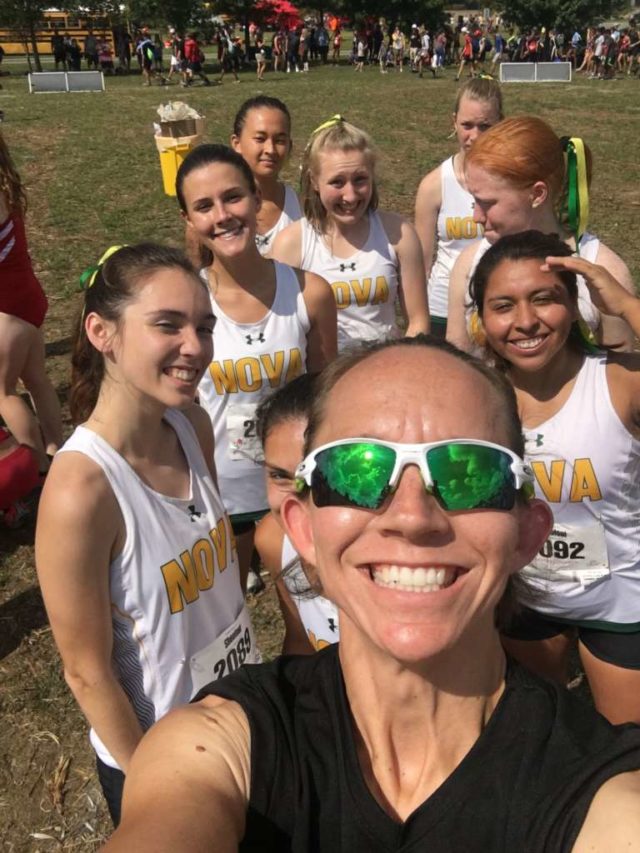
Starting a team from scratch is not easy, but for one local runner, it is a challenge worth doing.
Nicole Mancini may have had a short tenure as a cross country athlete, only competing for two years in college before switching over to marathon running, but her love for the sport is as strong as ever. Originally from Michigan, Mancini moved to northern Virginia in 2006 to work at Brentsville District High School in Nokesville.
With her running background, Mancini was an assistant for Rob Dulin for several years. But everything changed when Patriot High School opened nearby in 2011. Staff at Brentsville split between the two schools, and many coaches chose to go over to Gainesville Middle School rather than go through starting a new athletic program from the ground up at Patriot.
After a brief time at Gainesville, Mancini eventually took a professor job at the Manassas campus of Northern Virginia Community College. At the time, there was no cross country program there. To Mancini, that seemed somehow wrong.
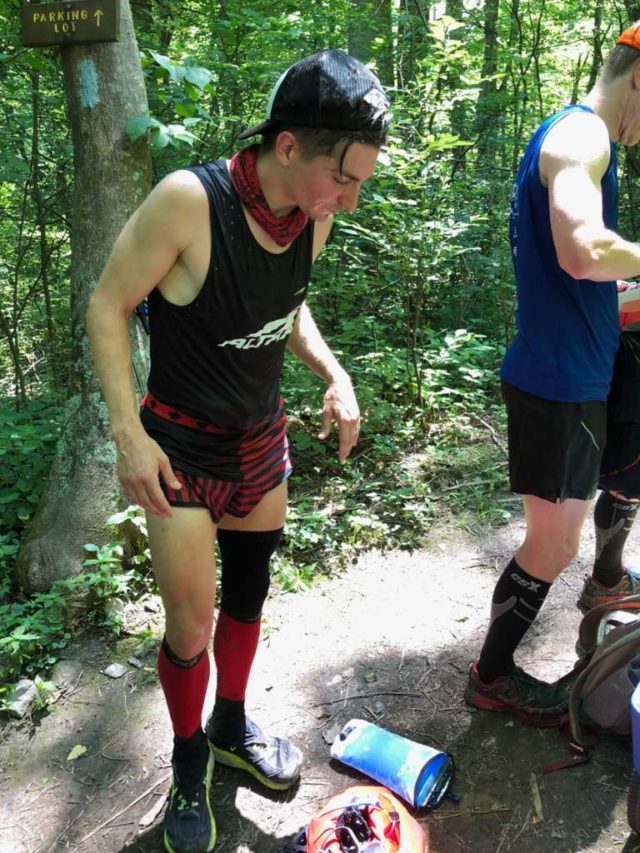
There was no medal, no bib and no race director. But for Silver Spring’s Adrian Spencer, none of those things mattered as he attempted a run to Washington, D.C from Gettysburg.
Spencer had not always been a runner. He started running six years ago while on a beach trip with his family. Back then, he was 50 pounds heavier and could not even run a mile. Quickly approaching his 30th birthday, Spencer decided to give running a shot, hoping it would get him in better shape.

In 2007, Greg Mariano ran the worst race of his life when he attempted, and did not finish, the New York City Marathon. He considered giving up running for good after that. But less than 11 years later, Mariano is turning heads as one of DC’s fastest improving sub-elite runners.
Originally from Colonie, N.Y., Mariano can still remember the first time he discovered his knack for running. During his high school freshman gym class, he was asked to run as far as he could for 12 minutes. Mariano ended up running 8.5 laps. “I don’t know what possessed me to try so hard,” he jokes.

Military academies are some of the most revered institutions in the country. Many only take in around 4,000 students in total. Among that small number of students, even fewer compete in varsity athletics. Meet three local athletes now running at the United States’ military academies.
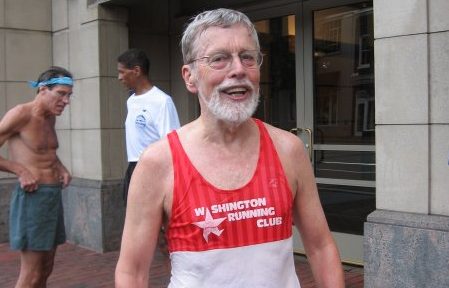
Gerry Ives sits at the table by his window, flipping through a photo album of old pictures and articles collected from decades of running. There are photos of him on magazine covers, on award podiums, out somewhere in the middle of a race and clippings of various articles and race results.
Every single photo in Ives’s thick book has a story and he joyfully recalls each one with a smile on his face. He is a man of countless tales, a man who has seen it all over 78 years.
Ives says his goal is quite simple: to run as long as he can. “There’s a guy I run with. He’s maybe 15 years younger. He says, ‘my goal is to run one more day than you’, and so now I just keep running just to piss him off.”
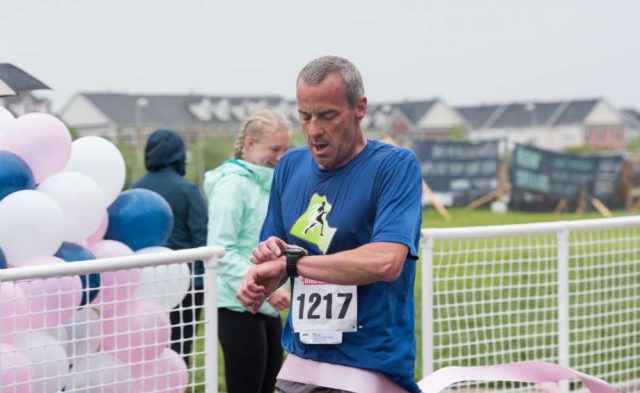
It’s as inspiring as it is a little naughty.
T-shirts that say “Run like Schmidt,” worn by dozens of runners at Rock Ridge High School in Ashburn.
Parents love it, though. The shirts aren’t as self deprecating as you think, because Brian Schmidt, the school’s cross country and track coach, is running again despite a traumatic injury a few years ago. He had been an avid road racer and ultramarathoner, and before Rock Ridge opened, had coached at Dominion and W.T. Woodson.
“I’ve been running since 1983 and when something gets taken away from you that you’ve been doing for 34 years, it’s very difficult to come to grips with it,” he said.
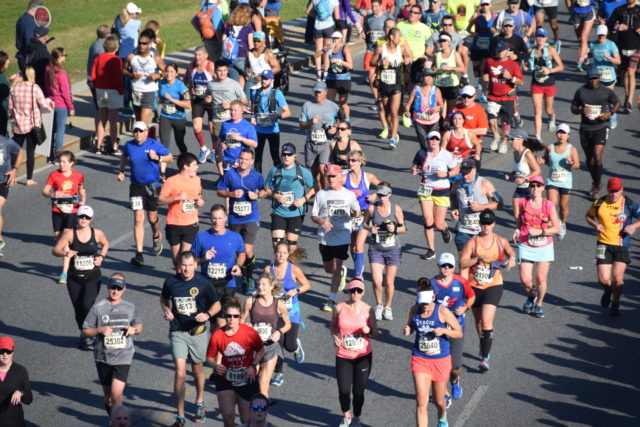
For some runners, it’s a first marathon. Others treat it as a homecoming of sorts. There were 20,303 different stories that involved crossing the finish line of the 2017 Marine Corps Marathon.
Antonio Osadalosada, 57, from Sacramento, Calif. was one of those runners.
This was Osadalosada’s second time running the Marine Corps Marathon. He also ran the year before. His goal this year was to improve on his MCM time from last year, which he did by six minutes.
“It was a perfect running day in my opinion,” he said with a smile across his face.
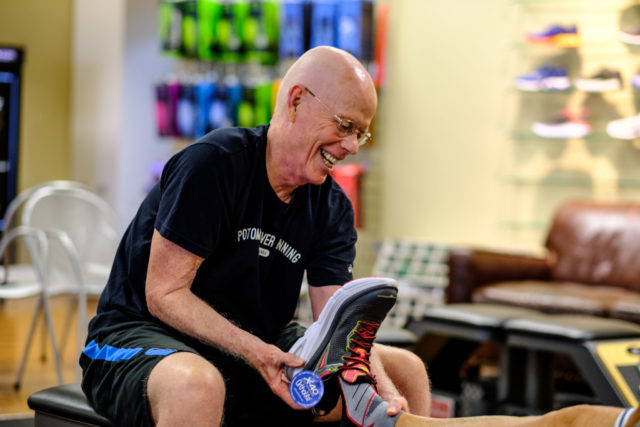
Location, Location, Location
“We’re moving,” reads a massive sign in the storefront window at 7516 Leesburg Pike near Tysons Corner.
To the passerby headed to do some grocery shopping, it may seem like any other storefront. But this location, home of one of the the longest continuous-running specialty running stores in the D.C. area, has held a special place in the running community since 1991. That’s not to say it hasn’t changed over the years–it began as Fleet Feet Sports, then Metro Run and Walk and, finally, Potomac River Running.
It all started with Lea Gallardo, who opened the store as Fleet Feet Sports.
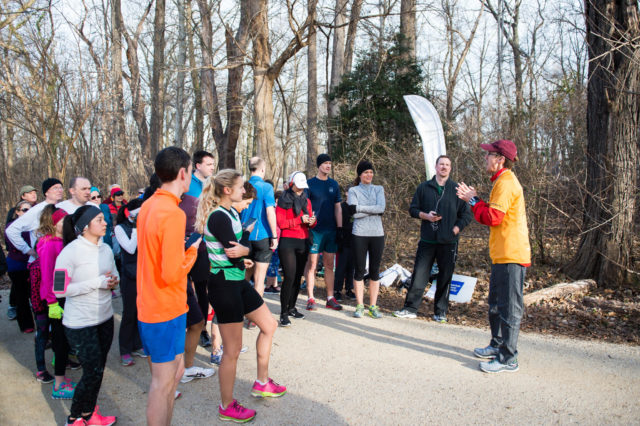
It’s Saturday morning on Fletcher’s Cove. A crowd of runners huddle together on the C&O Canal Towpath, ready to start their watches and run. At first glance, this may look like just a normal 5k, but on closer inspection, something is off. There are dogs in the crowd… children… strollers… No one is wearing numbers, there is no timing clock, no one is firing a starting gun.
Only a few miles away, a similar crowd gathers on the wooded trails of Theodore Roosevelt Island. Another gathers on the paved path of College Park’s Paint Branch Trail.
It’s something different: it’s a parkrun, a weekly running event growing in popularity around the world. In just one year, three parkrun events have started in the D.C. area alone.
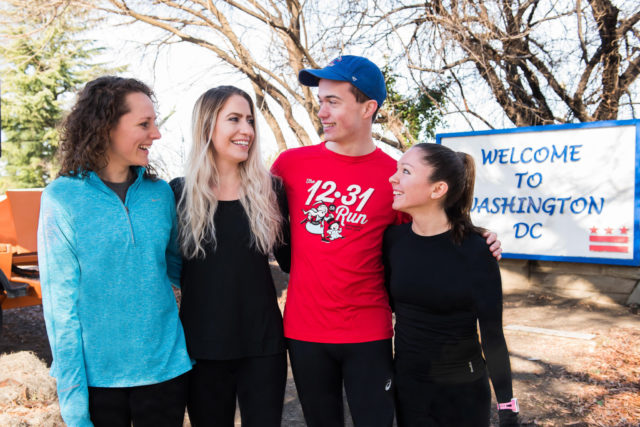
As the years and the miles add up, when you’ve seen the same trail hundreds of times, it can be hard to remember your first impression of running in D.C. But untold numbers of new runners move here each month, and their perceptions of the area, compared to where they lived before, are still fresh. Meet five of DC’s newest runners and their perspectives on running in the area.
Christina McGrath
For some, coming to D.C. can mean losing the treadmill and running outside. After finishing at Johns Hopkins, Christina McGrath was looking for fresh start in a new city. She set her sights on the D.C. area and moved to Arlington in May for a gap year while she applies to medical school.
Her 6,000-person hometown of Rowley, Mass. was not a hotbed for running.
“I wouldn’t really say there is a huge running scene there,” says McGrath. “It wasn’t until college that I really started to love [running].”
She started running as a way to deal with stress in college, and she signed up for the 2013 Nike Women’s Half Marathon and grew to love the sport. But she did not love training in the streets of Baltimore.
“Running in Baltimore wasn’t great because it’s dangerous,” she said.
So she did the majority of her training on the treadmill, with very little of her mileage outside.
McGrath finds that she feels a lot safer running in D.C. “Running on the trails, you never feel like you’re in danger and you never worry about cars and you always pass other runners, which is great.”
Now she is an avid outdoor runner. Her favorite places to run include the Custis Trail, Key Bridge and the National Mall. She ran the Marine Corps Marathon, where she set a new PR and qualified for Boston.
The biggest downside for her is the hot and humid summer weather. Apart from that, McGrath has a lot of other positive things to say about running in the area, citing the beautiful sights, the cool fall weather and the abundance of other runners.
“It seems like it’s a very active place, whether running or cycling or [doing] fitness in general. It’s an exciting place to live.”
Daniel Ritter
Like McGrath, Daniel Ritter did not grow up in a running community. He moved to D.C. from Springfield, Ohio to attend American University.
He started running track in high school, and he placed seventh in the state in the mile. He even competed against now-Olympic bronze medalist, Clayton Murphy, back when Murphy was just a high school senior.
Though his hometown had a competitive high school running scene, Ritter did not see a lot of opportunity to run at other levels.
“Running is not a big deal in Ohio once you graduate high school,” he says. “Springfield is not a running community at all. If I’m running in a neighborhood, I only see one or two casual joggers.”
After moving to D.C., Ritter was surprised by the high number of runners out on a given day. “The first week I was here, I found a bike trail and passed hundreds of people in the ten minutes I was there,” he said.
He finds that the abundance of runners also leads to a more accepting community of non-runners. “Running communities are very welcoming in general, but here, people who aren’t runners or aren’t currently running are very nice. At home I would get cat-called in short shorts or running without a shirt, but here I haven’t gotten anything at all, which surprises me,” he said. “I feel like D.C. just in general is more welcoming, drivers too.”
Ritter’s favorite place to run is Rock Creek Park, though he also enjoys the Battery Kemble Trail, the Glover Archbold Trail and Foxhall Road. Though he has only run one race in the D.C. so far, he looks forward to racing more.
“I’m really excited to be part of the racing scene here. I ran the Navy Mile and really enjoyed that. I’m excited to run some of the keynote races like Cherry Blossom.”
Mostly, Ritter is just excited to be part of a more competitive post-high school scene. “Here you can go to any decent-sized 5k and have a lot of competition. It’s good to really push races and not do it all solo. You can’t do that back home.”
Hannah Preston
Though she may be a newcomer to the area, post-collegiate professional runner Hannah Preston is no newcomer to running.
Preston is a city girl at heart. Originally from Chicago and more recently from Nashville, she moved to Alexandria in August when her husband took a new job.
Preston finds a lot of similarities between Nashville and D.C. With strong running schools like Belmont and Vanderbilt, the competition back home was always strong. “Nashville is a very fit city,” she said. “Lots of bikers and runners.” Nashville has good trails and places to run, though Preston says D.C. is still better.
“In general, there’s a lot more people out [in D.C.] and it’s a lot more scenic for sure,” she said. “I’ve run in a lot of areas where cars get mad at you, but that’s not the case in D.C. People are very accustomed to pedestrians and runners. It’s a good community to run in. [It’s] safe.”
Preston also appreciates that her runs are not limited to roads or concrete. “For me, the biggest convenience is the access to soft surface. And it’s scenic. You get to run on soft surface by the Tidal Basin and the Mall. So there’s a lot there.”
As a professional runner, Preston does not always choose her running route on a given day. Workout days and longer runs are planned for her by her coach in Fairfax. Those runs mainly take her to Burke Lake, Lake Fairfax or the Manassas Battlefield. “Even a quick drive out into the suburbs like Reston, Fairfax and Burke, there are so many soft surfaces, especially compared to Nashville. That wasn’t something I’d expected at all.”
On the days she can choose her own route, Preston prefers to run on the C&O Canal or the Mall. She also tries to run the Mount Vernon Trail at least once per week just to get some flatter mileage.
The one thing Preston misses most about running back home is the abundance of loop trails. “I find that a lot of my favorite trails, the ones that are loops, are quite a bit out in the suburbs,” she said. Many of the local trails like the Mall or Mount Vernon are all out-and-backs.
Preston’s first race in the area was the Parks 10k, which she won. She primarily races the 10k for now, though she hopes to transition into longer distances.
Claire Carmody
Claire Carmody may be new to Arlington, but she is not new to Virginia. Having lived in Richmond her whole life, Carmody moved to the D.C. area in August to start George Mason’s master’s program in social work.
Running in Richmond involved sticking mostly to parks or neighborhoods. Carmody says she rarely ran in the city.
Carmody competes in a variety of half and full marathon distances and works a local barre studio. She is not training for anything right now but plans to do a half marathon and 10 miler in the spring.
When first arriving in D.C., Carmody says she was surprised by the beautiful scenery. “There’s a lot more to see when you’re running.”
She also was surprised by the number of runners out on any given day. “No matter what time of day you go, there’s always someone going there,” she says. “I feel like it’s very runner friendly [here]. Cars are pretty cognizant of the fact that there are runners.Even bikers are well aware. That was not the case in Richmond.”
Her favorite places to run include the Mount Vernon Trail, the Tidal Basin and Georgetown. She prefers out-and-back routes and uses monuments as turnaround points.
The biggest cons, she says, are the traffic and the pavement, especially in her neighborhood around Rosslyn. “Going to Georgetown is hard through Rosslyn, especially if you’re trying to do interval training, and the pavement feels like it’s killing your shins.”
Cimone Safilian
Some runners are more serious than others. Cimone Safilian runs casually to stay in shape. She’s not training for anything, not planning to set any records and describes herself as a “leisurely” runner.
Originally from Detroit, Safilian moved to Arlington in August to earn her master’s degree in psychology at the Chicago School of Professional Psychology, which has a campus in downtown D.C.
Though she enjoys running outside, it was hard for Safilian to find running groups and trails in Detroit. She finds that this is not the case in D.C.
“I feel like I always see people running everywhere in the city and there are a ton of trails and they’re easy to find,” she says.
She also prefers the weather conditions and beautiful scenery.
Overall, Safilian loves the new city.
“There’s a lot to do. I feel like there’s always something going on,” she says.
Safilian ran track and field in high school, competing in the 800 and 3200 meter races. In 2006, she was injured while competing in the Chicago half marathon and has not run a serious race since then. Though she has no races planned, Safilian says she wants to complete another half marathon in the future and wants to do it in D.C.
Her favorite places to run include the Mount Vernon Trail, Key Bridge and Georgetown.
This article was originally published in RunWashington’s Spring 2017 issue

